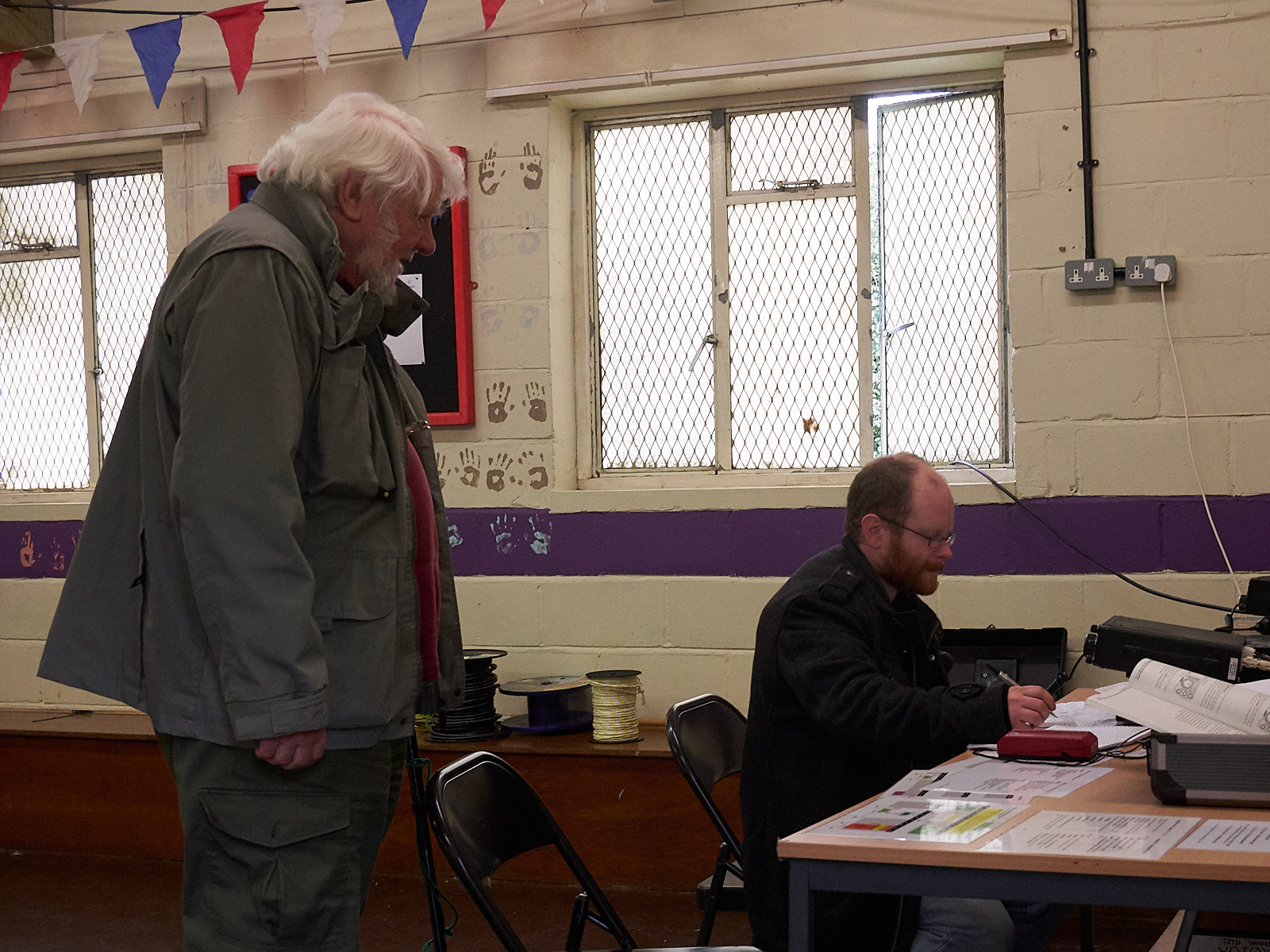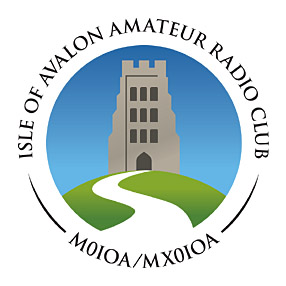Exercise Blue Ham October
Mike 2E0RWW has raised our game with Exercise Blue Ham where Amateur radio operators contact military stations staffed by air cadets from RAFAC on the shared parts of the military 5MHz band. Like before we set up the club station with the 60m flat NVIS dipole at 5.8m height above ground, engineered by Chaz.

This time, however, Mike rigged his Yaesu FT991 which seemed a bit easier on the ear with less background noise than the FT450 we’ve used for previous Exercise Blue Ham operating, and we could use the better noise reduction in the FT991. Mike organised our contacts list better using a whiteboard to track the MRE stations and which frequencies they were on and which had already been worked. Together with noticeably higher activity from the MRE stations this improved the success and contact rate. Mike worked 30 stations on Saturday1 which is more than we’ve worked over the previous two weekends in March and June we’ve taken part in Exercise Blue Ham. The station was supervised by Full licensees Chaz G6UVO in the morning and Richard G7LEE in the afternoon to permit the use of Club callsign MX0IOA on the 60m band.
QSO between MRE24B somewhere near Glasgow and MX0IOA on Sunday. We are not using a power mic. This is the Yaesu stock MH31 hand microphone, the echo is the ambient sound of the hard reflecting surfaces of the Scout hut, with the rig located in one corner.
This is the third time we have taken part in Exercise Blue Ham and there has been a notable increase in activity this time, conditions seemed good . It was heartening to hear some of the cadets becoming more skilled through the day, from being clearly nervous and a teeny bit mike-shy in the early morning to much more confident operators by afternoon. One of the Cadet leaders in Scotland rotated his cadets every few QSOs to give all of them time on air. The greater activity kept the Amateur radio operators on their toes. We’d like to congratulate the cadets on their hard work and giving of their best to become future military radio operators in the Services. It’s great that the Amateur Radio service can be of assistance on this exercise to give military trainees experience of a range of operators2 under real-world NVIS radio conditions.
Contacts for MX0IOA = 30 MRE11(5301), MRE12(5.403), MRE24(5.395), MRE12(5.32), MRE12(5354), MRE24(5.298), MRE12(5.395), MRE24(5.301), MRE12(5.398), MRE24(5.335), MRE12(5.301), MRE11(5398.5), MRE24(5.403), MRE51(5.3404), MRE24(5.371), MRE31(5.32), MRE12(5.298), MRE24(5.363), MRE61(5295), MRE11(5.379), MRE24(5.353), MRE61(5.335), MRE12(5.379), MRE51(5.4035), MRE24(5.313), MRE61(5.278), MRE24(5.398), MRE11(5.403), MRE12(5.371), MRE55(5.371),
On Saturday here seemed to be many more MRE stations on air and shifting frequencies this time than the last time we took part in Exercise Blue Ham, which made the exercise more interesting and challenging, but Mike’s organisation of the stations and frequencies worked meant we didn’t work the same station twice on the same day on the same frequency.


The sun came out for us on the Sunday afternoon, after a rather dreich Saturday and start to Sunday. On Sunday morning we suffered a fault on the MFJ antenna tuner, the inductor selector switch came loose which meant the contact was erratic, and unfortunately we didn’t have the Imperial allen key to remove the knob to tighten up the retaining nut. As a result we switched to the Club FT450 rig, which had a wider ATU tuning range as the antenna was outside the range of the FT991.
Conclusion
Update 14 Oct - RAFAC have very kindly updated the score and our certified tally was 56 contacts
At the end of the exercise the AlphaCharlie tally was 49
Contacts for MX0IOA = 49 MRE11(5301), MRE12(5.403), MRE24(5.395), MRE12(5.32), MRE12(5354), MRE24(5.298), MRE12(5.395), MRE24(5.301), MRE12(5.398), MRE24(5.335), MRE12(5.301), MRE11(5398.5), MRE24(5.403), MRE51(5.3404), MRE24(5.371), MRE31(5.32), MRE12(5.298), MRE24(5.363), MRE61(5295), MRE11(5.379), MRE24(5.353), MRE61(5.335), MRE12(5.379), MRE51(5.4035), MRE24(5.313), MRE61(5.278), MRE24(5.398), MRE11(5.403), MRE12(5.371), MRE55(5.371), MRE51(5.304), MRE51(5.395), MRE61(5320), MRE11(5.301), MRE16(5.298), MRE61(5304), MRE24(5354), MRE12(5.354), MRE61(5403.5), MRE20(5395), MRE24(5363), MRE11(5.335), MRE61(5278.5), MRE31(5.2985), MRE61(5403), MRE12(5.278), MRE11(5.366), MRE24(5.3985), MRE55(5.304),
which puts us in second place for Amateur operators after G4LOE with 54
Unfortunately three letters of MX0IOA are subject to easy transcription errors (I for digit 1, digit 0 for O and vice versa) so these are listed separately:
Contacts for MXO10A = 2 MRE45(5.335),MRE16(5.335),
Contacts for MX01OA = 2 MRE45(5.335),MRE45(5.379),
Contacts for MXOIOA = 1 MRE16(5.304),
and these was recorded erroneously
Contacts for MXIOA = 1 MRE56(5262),
Contacts for MRXIOA = 1 MRE11(5.32),
Mike 2E0RWW did most of the operating, and it does seem to be better to have a single lead operator because of the need to focus effort on avoiding duplicates of calsign and frequency. It may be worth thinking if we could use a second operator listening and doing the writing down to take some of the load off the lead op, but the innovations Mike introduced raised our performance greatly, which is good given the extra activity from the MRE stations.


Author: Richard G7LEE
-
From the Blue Ham 2019 score table (NB this is only live on the 12-13 Oct 2019) ↩
-
Some of us in the Amateur ranks might want to refresh ourselves on the NATO phonetic alphabet. That’s G for Golf, not George or Germany, guys. I heard at least one poor cadet led astray in repeating back a non-standard phonetic though most returned with the correct country prefix, Golf for some of us old-timers ;) ↩

